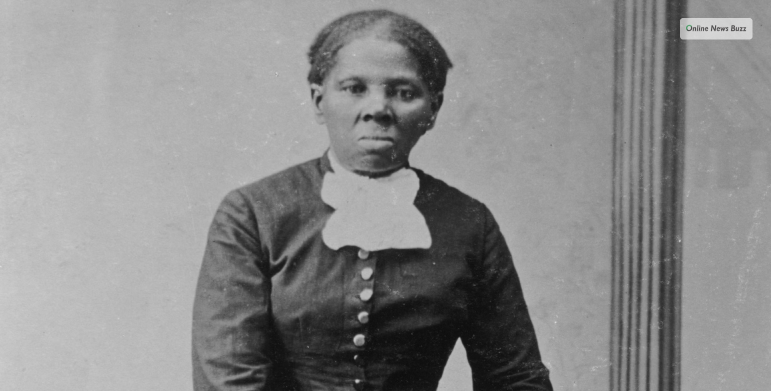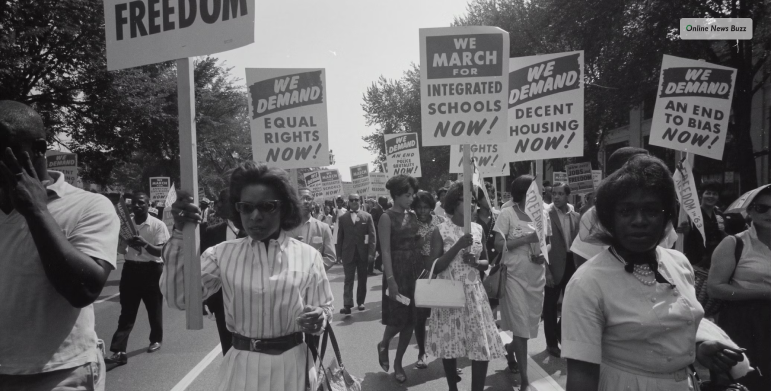
I am always inspired by black women who created history with their achievements and the change implemented in society! Harriet Tubman is a name that shines bright when we talk about black women’s activism and social awareness about slavery. Do you know why Harriet Tubman was so popular?
What Was Harriet Tubman known for? In this article, I will talk about this beautiful, strong and strong woman who had a role to play in American Civil War. When I read about how she worked hard to make people aware of slavery in the United States, I got goosebumps.
Let me share with you how Tubman dedicated her whole life to trying to abolish slavery. A philanthropist by nature, Tubman also organized a group of spies. Can you imagine bravery and courage against all odds and challenges? Please keep reading to learn about the beginning of this activism and How Harriet Tubman left her legacy!
The Woman Who Escaped Slavery to Become an Activist!

Can we dive into the present with Tubman to learn her experience better? Let me take you back to when Harriet created her life with hard work and courage. The time when Harriet was born was known as a time for “chattel slavery” when African Americans were forced into slavery.
The practices of slavery were hugely active in the South, and Harriet was born into this culture. Can you imagine the mindset in which the little girl was born and brought up? We need to read about Harriet’s life, which turned her into a slavery abolitionist and social activist. Do you feel like all black women are filled with grit such as Shirley Chisholm?
Even though her end was filled with poverty as there was no financial support from the government. There have been some inconsistencies and fallacies by her biographer, Sarah Bradford. I will clear up the misinformation so you can better understand.
Birth and Family

Born in 1820, Harriet Tubman lived on a plantation in Dorchester County, Maryland. She is “Minty” to her parents, Benjamin Ross and Harriet (Rit) Green, who named her Araminta Ross. On the plantation, Rit works as a cook in the “big house”, while her father, Benjamin, is a timber worker.
Minty changes her name from Araminta to Harriet in honor of her mother. With eight brothers and sisters, Minty is forced to see the reality of slavery. They are forced apart even when their mother tries to keep the family together.
Childhood

As a five-year-old, Minty goes to become a nursemaid! Need to be younger for a profession? Well, the family whips little Harriet because their baby cries. Do you see what it does to this little girl? There are permanent scars, both physical and emotional aspects.
At seven, she becomes a muskrat trapped in a planter and later becomes a field hand. The colonists did not consider the ages of the enslaved people and tortured them. At a very later age, when she is grown up, she claims to prefer physical plantation work over indoor and domestic chores.
Twelve-year-old Harriet carries a developed sense of justice as she runs interference between an overseer and a fugitive! The overseer throws a heavy weight towards the fugitive, but Harriet steps in; thus, the weight strikes her on her head.
It breaks her skull; thus, she bleeds and faints while they carry her home. The family had no bed or place to lie down, so there was a seat in the loom on which she lay down. Furthermore, her mother brings her back to health. Narcolepsy, a chronic sleep disorder, and headaches are the outcome of this action for the rest of Harriet’s life!
Escape from Slavery

Harriet started hallucinating and having vivid dreams after this accident, where she claims to have religious visions. Being a staunch Christian, these incidents made her unattractive to the slave buyers. She suddenly fell into deep sleep randomly and had physical sickness after her skull broke with the impact!
In the last will of Rit’s old owner, she and her children were set free, including Harriet! Even her father was set free in 1840. However, the new owner of Rit did not acknowledge it and continued considering them their slaves. She then married John Tubman, a freedman who encouraged her to pursue freedom.
She and her two brothers started a journey to escape the plantation towards Philadelphia, Pennsylvania, about a hundred miles away. Her brothers turned back, but not her! She found her liberty by following the Underground Railroad. Did you know there is a movie on Harriet starring Cynthia Erivo?
Harriet had a bounty on her head with a reward of $40,000 to whoever captured her! Yet, she was still not captured once. She served in the military during the Civil War, one of the strongest women in history!
Activism and Social Work

In the summer of 1859, Harriet Tubman worked with John Brown, who was an abolitionist in Boston! Both coordinated a raid on the federal arsenal at the Harpers Ferry in Virginia. However, John Brown was captured and hanged by Confederate General Robert E. Lee. So, your question is, why the attack on Harpers Ferry?
Brown wanted this attack to provoke an insurrection, which led to widespread emancipation. Tubman planned the Harpers Ferry raid with her geographical knowledge, including resources and covert activities. She also was responsible for recruiting enslaved individuals to support the cause in Canada.
Tubman finally settled in Auburn, New York, while separating from her husband. She remarried someone 22 years younger than her, a war veteran, Nelson Davis. They adopted a girl, Gertie. However, historians speculate that Margaret was close to Tubman.
The brave abolitionist went on a rescue mission to Maryland in 1859! Harriet went on to rescue a young girl, Margaret, her niece. However, many historians doubt that Margaret is Harriet’s daughter even though there is no proof. Margaret was hailed as a daughter from a moderately comfortable, freed black family!
So then, why did she uproot this child from her home? There is an uncanny similarity between Harriet and Margaret and a strong bond between the two! Some of these aspects led to this doubt!
American Civil War

In the American Civil War, Harriet Tubman worked hard to help enslaved people to travel to the North! She worked along with other abolitionists and the Union Army to save the enslaved people once they came behind the Union Lines. She gained knowledge over the years, and she contributed to the abolitionist movement!
Harriet was still worrying about the fight for the liberation of the enslaved! She worked as a nurse, treating wounded soldiers by implementing natural remedies. She became the “conductor” of the Underground Railroad, thus helping enslaved people from North to Canada, mostly traveling at night.
The abolitionist also carried a gun for her protection, along with drugging children and babies so that slave catchers would not identify their crying. Other abolitionists such as Martha Coffin Wright, Thomas Garrett, and Frederick Douglas joined hands with Harriet Tubman!
Later Life and Legacy
Her legacy is bright and shining as she led approximately 70 enslaved people to freedom. The older adults, men and women, children, and young babies escaped with the help of Tubman. She also guided a lot of people on how to escape toward freedom with the Underground Railroad network!
According to some reports, 300 enslaved people have been led to safety by Harriet! However, some biographers have manipulated these numbers, which has led to misinformation. “I never ran my train off the track, and I never lost a passenger.” what a legacy to have!
Turning into a philanthropist at an older age, she founded the Home for Aged & Indigent Negroes and Supported Women’s Rights. Her institution provided care for individuals who had blindness, vision impairment, epilepsy, and paralysis.
She supported the suffrage movement, thus aligning her objectives with those of New York-based suffragists such as Elizabeth Cady Stanton, Susan B. Anthony, and Lucretia Mott. They created movements that helped establish practices of freedom and autonomy.
Even when she was contributing to the welfare of the people and effective war support, the U.S. government only paid her $200 as compensation. She also worked as a spy, which made it difficult for her to receive accolades and acknowledgment from the federal government of the U.S.
She did receive some pension in recognition of her second husband’s death as an official veteran. However, she did not receive any recognition for military benefits! When you read about philanthropic activities, do you think Oprah Winfrey, another black woman is also contributing to society?
Finishing Off…
To sum it up, Harriet Tubman lived as a freewoman even though she was born into slavery. She fought for women’s rights, indigent negroes, and other helpless minority groups. I am sure you have read the article and now understand the significance of her contribution to slavery awareness and activism.
Even though the U.S. government supported Tubman, the compensation was quite low. We all agree that people who work hard to help others hardly get recognition.
Comment on what you think about Tubman’s struggle and how she used it to encourage others to be safe!
You May Like Also:




























